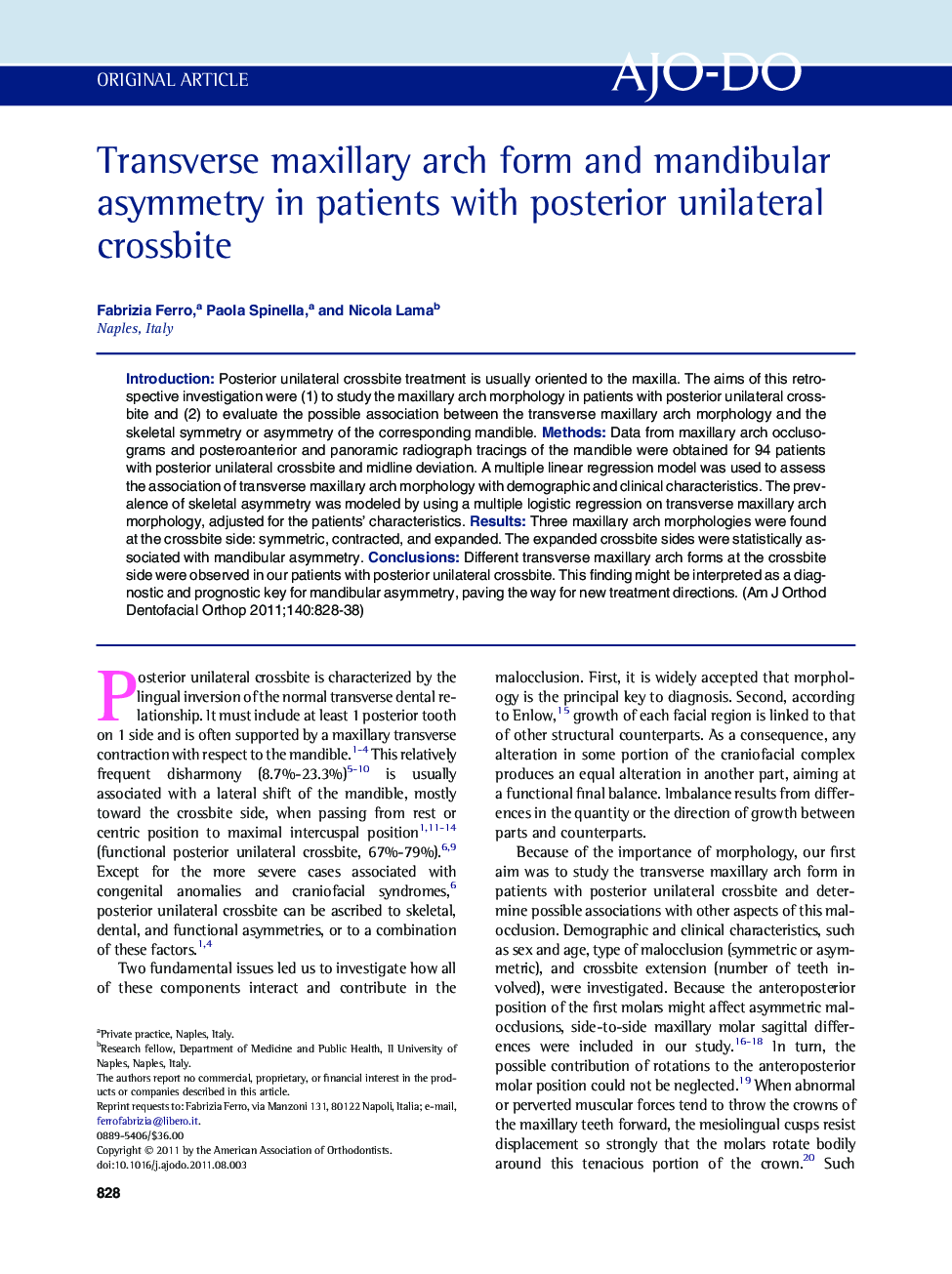| Article ID | Journal | Published Year | Pages | File Type |
|---|---|---|---|---|
| 3117173 | American Journal of Orthodontics and Dentofacial Orthopedics | 2011 | 11 Pages |
IntroductionPosterior unilateral crossbite treatment is usually oriented to the maxilla. The aims of this retrospective investigation were (1) to study the maxillary arch morphology in patients with posterior unilateral crossbite and (2) to evaluate the possible association between the transverse maxillary arch morphology and the skeletal symmetry or asymmetry of the corresponding mandible.MethodsData from maxillary arch occlusograms and posteroanterior and panoramic radiograph tracings of the mandible were obtained for 94 patients with posterior unilateral crossbite and midline deviation. A multiple linear regression model was used to assess the association of transverse maxillary arch morphology with demographic and clinical characteristics. The prevalence of skeletal asymmetry was modeled by using a multiple logistic regression on transverse maxillary arch morphology, adjusted for the patients’ characteristics.ResultsThree maxillary arch morphologies were found at the crossbite side: symmetric, contracted, and expanded. The expanded crossbite sides were statistically associated with mandibular asymmetry.ConclusionsDifferent transverse maxillary arch forms at the crossbite side were observed in our patients with posterior unilateral crossbite. This finding might be interpreted as a diagnostic and prognostic key for mandibular asymmetry, paving the way for new treatment directions.
